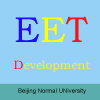-
Designing for accessibility
普通类 -
- 支持
- 批判
- 提问
- 解释
- 补充
- 删除
-
-
Introduction
PROVIDING ACCESSIBLE ONLINE CONTENT has a profound positive impact on students with disabilities. Accessibility refers both to the capacity of a web-based resource to be used effectively by people with disabilities such as motion impairment, low vision, blindness and deafness as well as cognitive impairments.
“Effective use” involves interaction with electronic resources in a manner that is equitable to that of individuals without disabilities. The term accessibility also refers to the efforts of a designer to enable a web page to function with assistive technologies. Designers can achieve accessibility by becoming aware of web page structure requirements for these technologies as well as by being informed of some key standards and checklists developed to help open doors to the World Wide Web.-
Guidelines for Accessibility Design
According to a 1997 U.S. Census Report nearly 20 percent of Americans have a disability and the numbers are increasing as the population ages. Users with disabilities frequently access the Web using assistive technologies such as screen readers, audio players, touch screens, head pointers, and voice activiated devices. These products do not read web sites the same way that browsers such as Internet Explorer and Netscape Navigator do. Designing online content to meet the needs of those with disabilities usually makes the information more usable for everyone. Better accessibility for your online content can be achieved in the following ways:
-
Reveal design tips






-
Legislation
Section 508 of the United States Rehabilitation Act of 1973 requires that electronic and information technology developed, procured, maintained, or used by the United States Federal government be accessible to people with disabilities. In the next few years these requirements may be expanded to apply to any private or public institution that receives federal funding. Similar requirements and policies have also been standardized around the world. Canadian Common Look and Feel (CLF), the UK Disability Discrimination Act and eEurope Plan are examples of efforts to achieve access to Internet technology for everyone in our new global information society.
Other key U.S. legislation includes Title 2 of the Americans with Disabilities Act which was passed in 1990 to compel states and municipalities as well as the business sector to enable effective communication throughout the Internet.-
Validation
The World Wide Web Consortium (W3C) is the world's primary organization charged with overseeing developments and improving the web. W3C created the Web Accessibility Initiative (WAI), which coordinates with organizations globally to pursue web accessibility through technology, guidelines, tools, education and outreach. WAI has drafted a comprehensive document including 14 guidelines to help designers create content that is understandable and navigable to those with disabilities.
Software exists to help instructional designers check their content for accessibility. "A-prompt" is a web accessibility verifier that examines Web pages for barriers to accessibility and performs automatic repairs when possible. "Bobby" is another such program with a free online page checker. Macromedia's Dreamweaver 2004 MX web design software also has an accessibility validation tool for checking pages, or entire sites for compliance with Section 508 standards and W3C Guidelines.-
Conclusion
Educating oneself about the prevailing guidelines and standards for accessibility and taking steps to check one's web pages for common design flaws is good practice. Compliance with laws such as Section 508 and ADA Title 2 helps reduce discrimination and shows good citizenship. By investing a reasonable effort into making your courses accessible, disabled students will receive the same opportunities for success enjoyed by their classmates. Providing accessible courses also makes it possible for institutions to reach students they otherwise may not have been able to serve.
-
References
Foley, A. & Regan, B. (2002) Web design for accessibility: policies and practice. Educational Technology Review, 10,1. Retrieved November 28, 2004 from http://www.aace.org/pubs/etr/issue2/current.cfm.
WebCT. (2004). Universal Design for Accessibility. [Workshop Guide].-
More Information
For more information about designing for accessibility, consult these websites by clicking on the links:
Accessibility and Macromedia Dreamweaver MX 2004- How to create accessible content with Dreamweaver
A-prompt - is an accessibility validation and repair utility
Bobby - a web-based tool that analyzes Web pages for their accessibility to people with disabilities
Jaws - a speech synthesizing software
WAI -Web Accessibility Initiative-
Author
Amanda Ryan, Student, Masters of Educational Technology Program, SDSU
Ryan, A. (2004). Designing for accessibility. In B. Hoffman (Ed.), Encyclopedia of Educational Technology. -
-
- 标签:
- accessible
- disabilities
- accessibility
- web
- 2004
- design
- guidelines
- information
- technology
- designing
- content
-
加入的知识群:



学习元评论 (0条)
聪明如你,不妨在这 发表你的看法与心得 ~